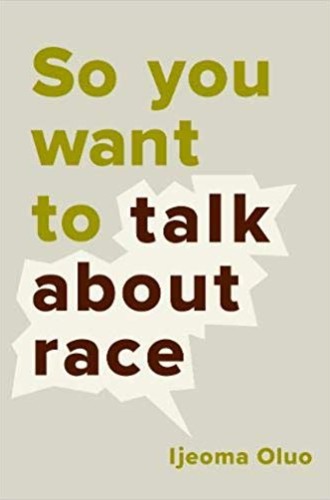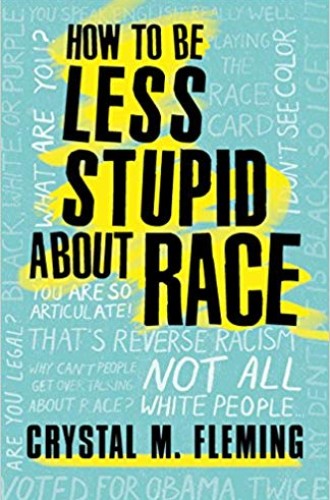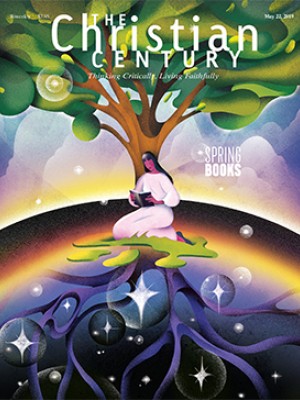Put Ijeoma Oluo and Crystal Fleming on your antiracism reading list
Two new books offer an education—with grace and humor.
At the very first antiracism circle our church hosted, the small group that gathered included one person of color. After introductory conversation and an opening exercise, a white man turned to that one woman of color to express shock, dismay, and guilt, pleading with her to teach him how to stop being racist. He essentially vomited the emotional guilt-bile of white male supremacy into her lap. The woman turned toward him finally and said, “I do not have time to tell you what it’s like to live as a black woman.” She never came back.
If I could access any of the time-traveling devices of fantasy fiction, I would get these two books directly into the hands of that earnest white man. White people have so much to learn, and Ijeoma Oluo and Crystal Fleming offer an exceptional education. They do it graciously and with humor, but they are just as tired of racial ignorance as that blessed woman in the circle at church.
Read our latest issue or browse back issues.
Most religious institutions—left, right, and center—have at some point launched some sort of “sacred conversation on race.” But many of these initiatives feel as thinly planned and resourced as Howard Schultz’s #RaceTogether campaign. When police were called on two black men waiting for a friend to arrive at a Starbucks, the CEO’s first response to the now infamous incident was to invite baristas to hashtag peoples’ fancy caramel coffee drinks with random invitations to talk about race. Randomly asking people in a room to “talk about race” is a cocktail made for disaster from a 350-year-old recipe. But Schultz is not alone. People in churches make these blunders, too.
Both Oluo and Fleming begin in the place where conversations about race often go wrong from the start: agreeing on what we’re talking about. A chasm yawns between “conversations about race” and actually dismantling racism, the structural inequity that has for several hundred years worked to preserve economic resources and communal spaces for people socially defined as white.
Oluo, whose background in political science has evolved into writing and speaking about race full-time, structures her book around 16 of the most common questions she hears, including, among others: What is racism? Why am I always being told to “check my privilege”? Is police brutality really about race? Why can’t I touch your hair? What are microaggressions? I just got called a racist; what do I do now? She unpacks each question with vivid personal anecdotes from her own experience living in white majority spaces that understand themselves as liberal or progressive.
Take, for example, her chapter on privilege. Privilege, she writes, is an advantage or set of advantages that you have and others do not. You didn’t do anything to get them, and you don’t have any control over which ones you have and which you don’t. That’s why privilege is so irritating. “The concept of privilege violates everything we’ve been told about fairness and everything we’ve been told about the American Dream of hard work paying off and good things happening to good people.” (Here I penciled in the margin, “even about God!”) She continues: “The concept of privilege makes the world seem less safe.”
Oluo digs deeply into privilege, using her own as raw material: her lighter skin, her white mother, her degree in political science. Her use of “I” statements helps readers see how one person’s privilege means someone else’s disadvantage. “When we identify where our privilege intersects with somebody else’s oppression, we’ll find our opportunities to make real change,” she writes. Acknowledging how this new knowledge can sting, especially when it comes unsolicited from others, she offers gently helpful advice: “Try to remember that the alternative to not being made aware of your privilege . . . is your continued participation in the oppression of others.”
Oluo never leaves her readers wallowing in shame and guilt. She consistently includes concrete steps to do better. She also never ditches the honesty of sharing what she has learned, often through error. Her confessions are especially moving in the chapter “What is the model minority myth?” Oluo writes for both white people and people of color, and she signals when her advice applies to a specific lived experience.
Fleming’s book is more outrageously funny than Oluo’s, with the emphasis on the outrage. Having studied racism in contemporary France, Fleming has no time for American exceptionalism, especially its white feminist manifestations. “Why do white liberals who can’t even confront their Trump-supporting friends and family members think they can lead the ‘Resistance’?” The book’s epigraph quotes Martin Luther King Jr. in Where Do We Go from Here: Chaos or Community? (1967): “It is an aspect of their sense of superiority that the white people of America believe they have so little to learn.”
A master of throwing shade, Fleming frolics through a chapter fangirling on Her Royal Highness the Duchess of Sussex, Meghan Markle, to puncture the myth that interracial love can heal all wounds. In another chapter, she includes a searing critical race theory analysis of the popularity of Barack Obama. As someone who more than once has noted proudly that my home state of Ohio “voted for Obama twice,” I read this chapter feeling like I was on a much-deserved trip to the principal’s office.
Fleming’s strength is her expertise as a sociologist. She packs a fully resourced course into the book as she wields her data like a sword, shredding racist nonsense. Especially important is a 2007 study by Leslie Picca and Joe Feagin called Two-Faced Racism: Whites in the Backstage and Frontstage. Picca and Feagin’s research blasts numerous myths about affirmative action and illustrates how well-meaning people can say and do racist and antiracist things simultaneously (even, for example, in the same presidential speech).
Like Oluo, Fleming confesses to a childhood of racial stupidity—or at least to having been protected from racism’s impact in some measure by the even more marginalizing mantle of a conservative religion. Her book’s title is not meant as an insult. With rigorous research, she illustrates how living in a racist society socializes all of us to be ignorant about race. Her chapter “Fake Racial News” led to a jaw-dropping epiphany regarding my confusion over my own white family’s attitudes toward welfare and poverty.
Blunder we will. But we can minimize the blunders we make and thus reduce their emotional toll on our friends, family, and colleagues. Fleming and Oluo offer guides. Those who read them will be less in danger of wasting another black woman’s time.








